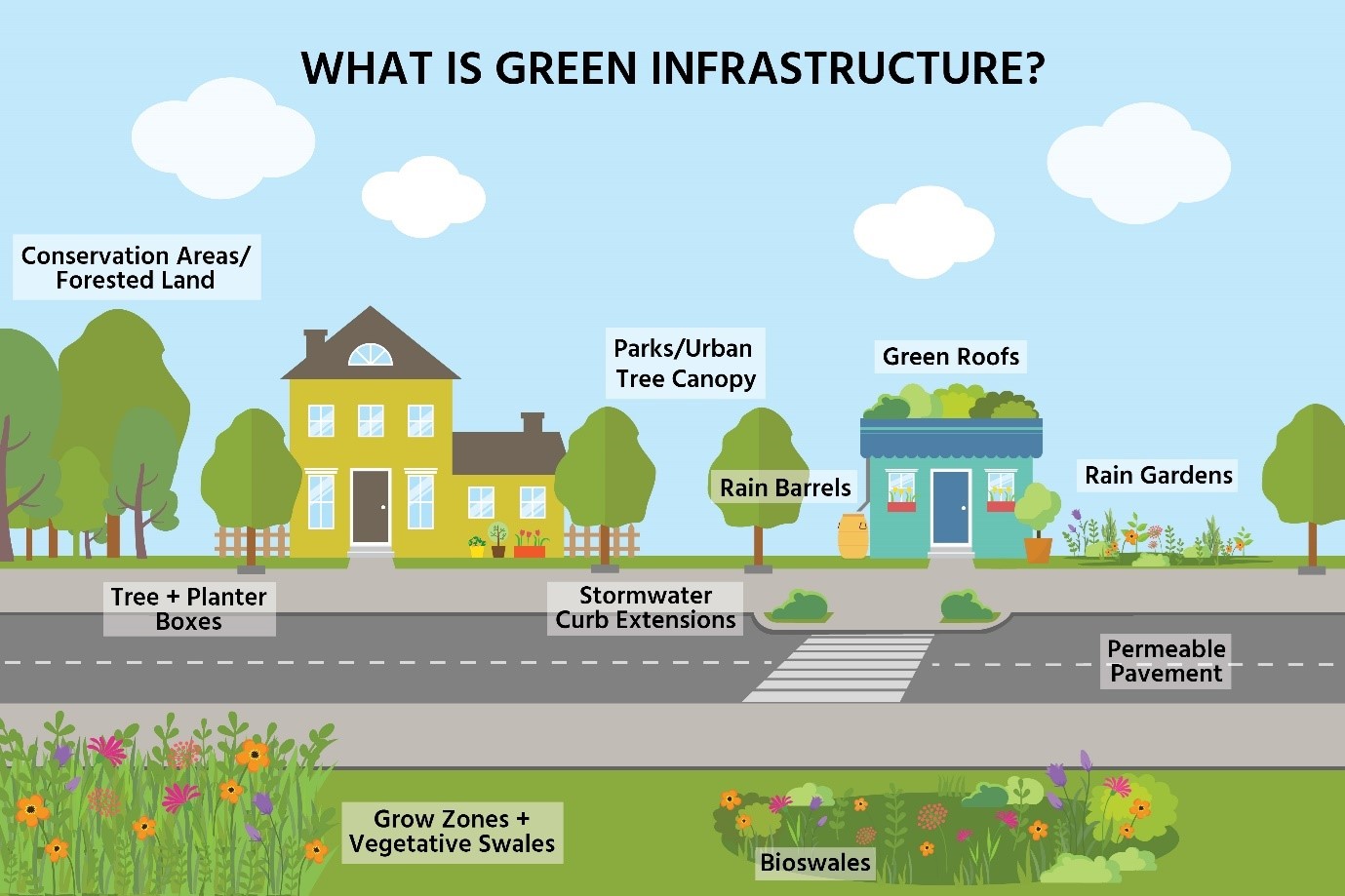Green infrastructure is a network of multi-functional green space and other green features, urban and rural, which can deliver quality of life and environmental benefits for communities. Green infrastructure is not simply an alternative description for conventional open space. It includes parks, open spaces, playing fields, woodlands – and also street trees, allotments, private gardens, green roofs and walls, sustainable drainage systems (SuDS) and soils. It includes rivers, streams, canals and other water bodies, sometimes called ‘blue infrastructure’.
Our green infrastructure network of natural and semi-natural areas across the county deliver a wide range of ecosystem services such as water purification, air quality, space for recreation and climate mitigation and adaptation. This network of green (land) and blue (water) spaces can improve environmental conditions and therefore citizens’ health and quality of life. It also supports a green economy, creates job opportunities and enhances biodiversity.
Access to nature promotes good physical and mental health, improves well-being, and encourages people to take exercise. Indeed, these benefits increase as the number and diversity of plant and animal species rises. In Oxfordshire, NHS Forest creates green spaces on NHS sites and promotes Green Health Routes to get people active. Initiatives like Green Gyms encourage volunteers to take on conservation tasks, while improving their health and well-being.
The Green Infrastructure Framework is a new set of principles and standards that supports the greening of our towns and cities and connections with the surrounding landscape as part of the Nature Recovery Network. The GI Framework will help local planning authorities and developers meet requirements in the National Planning Policy Framework to consider GI in local plans and in new development. It can support better planning for good quality GI, and help to target the creation or improvement of GI, particularly where existing provision is poorest.
Oxfordshire County Council commissioned a review of the role and benefits of GI to Oxfordshire in 2021. This report sets out the strategic case for investment in Green Infrastructure across the county, and provides robust evidence on the significant contribution Green Infrastructure can make to its sustainability challenges.
South Oxfordshire District Council has a Green Infrastructure Strategy which aims to contribute towards effective spatial planning and place shaping by ensuring that proposals for new development take account of existing and proposed green spaces within the district.

Despite being a largely rural county, more than 66% of Oxfordshire’s population lives in an urban setting. Whilst having known benefits for people, urban green spaces can also benefit wildlife. There is a great deal of helpful information available on how to manage areas such as domestic gardens, playing fields, allotments, parks, woodlands, churchyards and cemeteries for the benefit of wildlife. In Oxfordshire, these spaces range from the centuries old Oxford Meadows to newly created sites such as Spiceball Park in Banbury. Urban green spaces can act as ‘stepping stones’ for plants and animals, linking to rural areas and larger ecosystems. Hedgehogs travel around one mile every night through our parks and gardens in their quest to find enough food and a mate. We know that one of the main reasons why hedgehogs are declining in Britain is because our fences and walls are becoming more and more secure, reducing the amount of land available to them. Hedgehog Highways can make their life a little easier by removing the barriers within our control – for example, by making holes in or under our garden fences and walls for them to pass through. Kirtlington Wildlife & Conservation Society have connected 43 premises for hedgehogs, including the village pub, Church, school and shop.
Our Wild Kidlington project is a great examples of how communities can come together to enhance urban biodiversity.